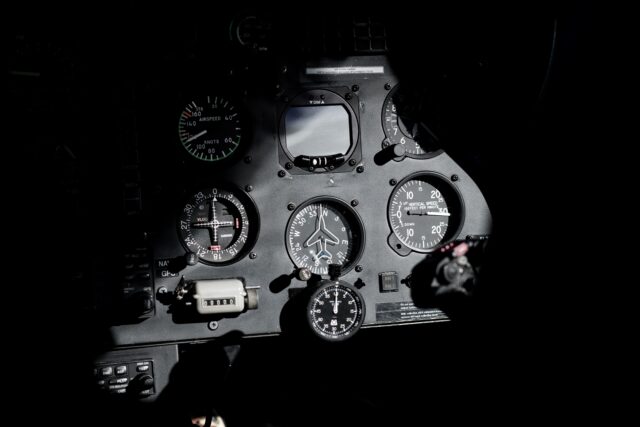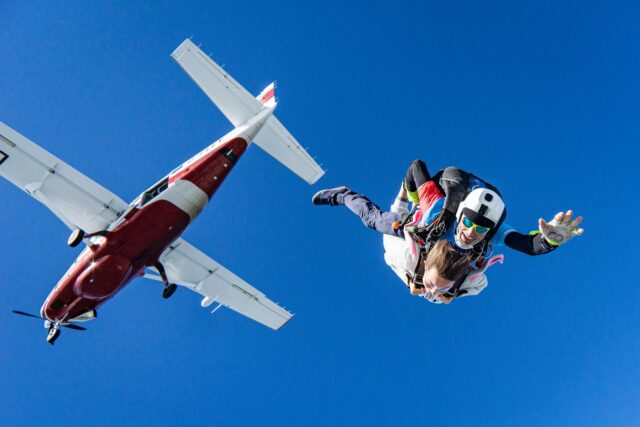April Showers Bring…More Questions and Answers
It’s time again for a collection of questions from readers for the community to answer. This time, I’ve collected some questions from the comments that didn’t get much attention previously. If you know the answer, come on over the comments and leave a note. If you have a question, add it to the comments (one question per comment is easier to answer) or mail me and I’ll add it to the next batch.

I love this new series because it really shows how the community can come together to share knowledge without implying that people should already know.
So to start, one from me for the instrument rated pilots:
Sylvia wrote: Is one expected to be established on the ILS before reaching the Outer Marker?
Jeff wrote: Do airliners ever fly over the north pole? If flying over the pole was the shortest route, would an airliner use it?
Gordon wrote: A question is about flying west in the late afternoon around the equinoxes – how do you see anything with the western sun in your eyes. As a car driver, I can strike it lucky and have a cloudy day, and of course roads twist and turn a bit. But even so, I’d always time a trip so that I am not driving due west around sunset. The same problem faces truck and coach drivers and train drivers who have a schedule to stick to and cannot avoid driving in such conditions. Private pilots probably have to have landed before sunset anyway, so may not face the problem, but commercial flights are going to be facing this issue, and for the larger planes, once out of the clouds it’s sun all the way. I realise it might only be for 30 minutes before the sun is low enough not to be a problem, but for that time it must be awkward.
Raymond wrote: My question relates to the replacement of three person crews in commercial heavies with two person crews. In the 1960s, 70s, and 80s I believe that western commercial heavy/widebody airliners all flew with three person flight crews. Smaller commercial airliners, under 80,000 MTOW?,were permitted by FAA to have two person crews, but I don’t have a specific reference for that. Did the relevant agencies study smaller crew sizes, presumably due to better avionics in the more modern planes, in any rigorous way before these regulatory changes took place? What is the history behind this change?
Nancy wrote: We were flying from Seattle (SEA) to Vancouver Canada (YVR) on an Alaska Air Lines Bombardier Q400 Turboprop (about 75 passenger max) and it was probably less than 1/4 filled. We all took our assigned seats but before takeoff the pilot asked us all to move to the middle of the craft. Is this common when there is so few passengers on the smaller aircrafts? Is seating taken into consideration like this in larger ones?
Last time, Mendel wrote: What kinds of pilots routinely wear parachutes or have them available. This got very specific answers and I want to take it further: under what circumstances is wearing a parachute considered to be important?
(My theory: if there is a real risk that the aircraft could disintegrate around you)

Now over to you! I’m looking forward to seeing another great exchange of information. Please help each other out and be patient with one another.








When I went skydiving 20 years ago, our pilot was wearing a chute.
I thought it was strange at the time, but I think it is an FAA requirement if you plan on opening the door in flight.
That checks out:
Flying for Skydive Operations – P-8740-62, https://www.faasafety.gov/files/gslac/library/documents/2016/Sep/120445/Flying%2520for%2520Skydive%2520Operations.pdf
Have you looked at the Air France 212 crashes in the late ’60s?
So there’s an Air France 212 crash in 1968 that hit a mountain while it “had the runway in sight” – sounds familiar. The aircraft was only on its 2nd flight with 33hrs total on it.
Then there’s an Air France 212 crash in 1969 that crashed into the Atlantic a minute after takeoff. No one knows why because the documents are classified until 2029.
Perhaps the moral is don’t fly on an Air France flight numbered 212. :-)
From my email:
Sylvia wrote: Is one expected to be established on the ILS before reaching the Outer Marker?
Mel answers: Yes. The sequence is (1) intercept the localizer, (2) fly to the Initial Approach Fix (IAF), (3) at the IAF, configure flaps and power for approach (usually gear somewhere around tow to). You’re the “established” on the approach. The idea is that your descent and speed are constant to maintain the glide slope. Then (4) you reach the outer marker, which may have a step-down altitude, followed by (5) the middle marker and finally (6) the Minimum Descent Altitude (MDA) or Decision Height (DH).
ATC will generally say “established on the localizer” or “established on the final approach course.” “Established on the approach (procedure)” is approved phraseology, but just means being stable following any part of the approach procedure. (See Pilot/Controller Glossary).
IAFs are often not located on the localizer. (Example: ILS 17L at KSMF, there are 2 IAFs) You are on the approach (established on the approach) from the time you begin flying according to its procedure, but you are only established on the localizer once you have intercepted it. In many cases you might be given direct to an intermediate fix, direct to an IAF that requires flying outbound on the marker followed by a course reversal, or might be vectored to the final approach course (no closer than 2 or 3 miles outside the FAF depending on intercept angle).
The outer marker coincides with the FAF, so you should be established on the localizer before reaching the FAF/OM. If not, it’s a miss.
Gordon wrote: A question is about flying west in the late afternoon around the equinoxes – how do you see anything with the western sun in your eyes?
Mel answered: When you’re first learning to fly, this is a common problem that seems impossible for new pilots to deal with. However, you eventually learn how to work around forward visibility limitations due to the sun on the horizon. You do this through a combination of instruments, lateral landmark sighting, and ded reckoning. Private pilots can fly in night time too in the US, so they have to deal with this as well.
Do aviator sunglasses ever come into it?
“Do aviator sunglasses ever come into it?”
Only if you are a flight cadet from NAS Pensacola hanging out at Hopjacks* or the President of the USA. RayBan has a shrinking market.
The real answer, you squint a lot, shade you eyes with the left hand and hope they can see you better than you can see them.
*Guilty, I did my time at P’cola and consumed my ration of beer and pizza at Hopjacks while wearing RayBans.
Nancy wrote: We were flying from Seattle (SEA) to Vancouver Canada (YVR) on an Alaska Air Lines Bombardier Q400 Turboprop (about 75 passenger max) and it was probably less than 1/4 filled. We all took our assigned seats but before takeoff the pilot asked us all to move to the middle of the craft. Is this common when there is so few passengers on the smaller aircrafts? Is seating taken into consideration like this in larger ones?
Mel answered: The smaller the aircraft, the more important weight balances. in large aircraft, they can often adjust weight and balance in the baggage compartment. In smaller commuters whether is not a lot of baggage, they may will have to move passengers around. Strain sensors in the wheels measure the weight and thus let the pilots compute the balance without having to calculate the weight of every passenger. Then they simply move the appropriate number of passengers to get back inside the flyable envelope.
Regarding parachutes: In the United States, parachutes are required if you are doing aerobatics, but this is mostly aimed at anyone who will be flying inverted. I’ve gone on a few flights in Stearmans and other biplanes with aerobatic capabilities, and those owners have said that as long as they don’t go past vertical (like in a wingover or a hammerhead) a parachute isn’t required. other times when parachutes are definitely a good idea (and may be required though I don’t know for sure) are when ferrying aircraft, long over-water flights, and flight testing.